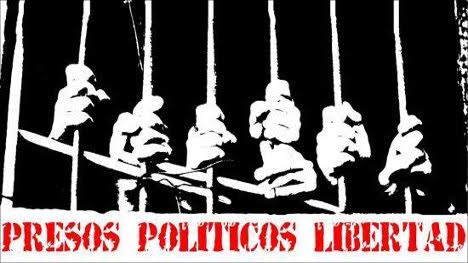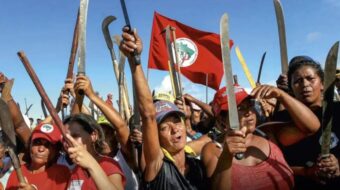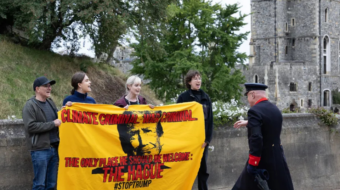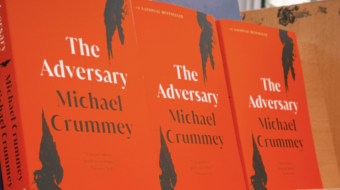
Political prisoners do exist in Colombia. In the current context of peace negotiations between the government and the FARC-EP guerrillas, and prior to the eventual beginning of talks with the National Liberation Army (ELN), recognition of such is absolutely necessary. It would be incomprehensible if an agreement to end the conflict does take place while thousands of political prisoners still remain behind bars, not to speak of those who were convicted unjustly – the convicted innocent – and who did not have the possibility of their cases being reviewed and, in this way, to be remedied, late though it may be.
Data on the extreme violence of Colombia’s long, internal armed conflict suggest that the condition of those imprisoned today as political prisoners is becoming more and more complex. It’s not a matter exclusively of those men and women who joined the insurgencies as combatants and who are defined as prisoners of war under international law, but rather of the great majority of Colombian political prisoners who are drawn from the non-combatant majority population. They are political prisoners of conscience and political prisoners in connection with the internal armed conflict. The latter belong to the unarmed political opposition.
They are defenders of human rights, critical thinkers, or take part in social movements, labor unions, the student movement, small farmer organizations, and groups representing indigenous or African- descended Colombians.
This tragic reality, among others, is quite understandable as the result of a politics that distorts the idea of political crime and converts the universal right of rebellion into a crime. And the latter is used as a weapon for persecuting those in the opposition, whether they are under arms or are legal. In this way thousands of political prisoners are not even being tried or sentenced for political crimes as strictly defined like rebellion, sedition, rioting, and crimes related to these as established by the Colombian criminal justice system. Instead they face charges that are beyond the realm of political crime and quite separate. We are speaking of common crimes like terrorism, kidnapping, forced displacement, forced recruitment of minors, and narco-trafficking. Additionally, through false allegations of this last crime, that of narco-trafficking, some political prisoners have ended up being extradited to the United States, although the Colombian Constitution prohibits extradition for political crimes.
Mutilation, terminal illness, women and children, inhuman conditions
This goes to show that we are looking upon a panorama in which students and academicians are seriously portrayed as being terrorists, labor union leaders as financiers of terrorism, and innumerable rural people and social justice activists as narco-traffickers. But also there are hundreds of political prisoners, prisoners of war actually, who, many of them, are suffering from severe mutilations incurred at the time they were captured, or terminal illnesses that clearly deserve treatment in accordance with international humanitarian law. Others of them are facing lengthy judicial processes and sentences while existing under inhuman conditions. Many of the female political prisoners are mothers, some having been armed combatants, others not. Furthermore, several are single – mother heads of families, a situation carrying special requirements that are almost always ignored. And many of them have children with them in prison who are less than three years old. For them, the penitentiary and incarceration system and the judicial apparatus operate in favor of men. Justice is differentiated by gender, and despite various laws gained for women by women, justice in practice is non-existent.
Not all political prisoners find themselves deprived of freedom inside prison walls. Some, a few, live under detention in their own homes and others in prison homes, and although their conditions are substantially improved compared with those living under degrading prison conditions, deficiencies and perversions of the judicial system do remain.
But also there are the former political prisoners who are at partial liberty: those free having completed their terms, free provisionally, and free on various conditions. The ones in this situation suffer harassment, stigmatization, persecution, denial of judicial benefits they’ve earned, and lack of opportunities to rebuild their lives.
However, it’s necessary to understand also that, especially in the case of political prisoners, sentences aren’t limited to being physically deprived of freedom. Accessory penalties are imposed also, like removal from public office, or administratively being declared unfit to fill this type of office, or being required to pay onerous fines. A “victims’ unit” usually imposes such fines, and thus victims are converted into victimizers.
All of this is backed up by a judicial apparatus that applies criminal law to political opponents as if to an enemy and a prison society that is one of the results of manipulation by the official mass media. Each one ends up serving to legislators who, on the one hand, approve more punitive laws and new penal standards and who, on the other, justify the de facto denial of basic principles in the implementation of justice, among them due process, presumption of innocence, and technical defense etc. Taken together, they make the situation of thousands of Colombian political prisoners more onerous.
How many prisoners are there?
As if this overview did not suggest enough difficulties, even now – and as a result of such difficulties – a really accurate census of how many political prisoners there are, prisoners of conscience and prisoners of war alike, does not exist. The institutions base their census almost exclusively on who is being processed for the crime of rebellion. Among the organizations defending political prisoners, and among the political prisoners themselves, there is no consensus in regard to how many there really are. Some partial counts do exist – They vary according to the type of political or social organization – but there is no unified national census of all political prisoners. Some organizations speak of 4,500 political prisoners drawn from both armed combatants and civilians, and others mention around 9500. The FARC-EP spokesperson Iván Márquez holds that of the total number of political prisoners, around 90 percent are people who are non-combatants or prisoners of conscience. In other words, political prisoners of war add only 10 percent to the grand total.
That’s why it’s so important that a census or a sufficiently rigorous report on the situation of political prisoners exists within the framework of any agreement on justice for the situation of political prisoners. And such a tally must be sufficiently inclusive so that none of the political prisoners or ex-political prisoners who are convinced they were unjustly convicted can be excluded from alternatives being considered in an agreement between the parties on justice. They may be called pardons, amnesties, revision, or whatever may end up being approved. That is an urgent task and requires a great effort of collective formulation.
What is required?
A favorable end of the conflict requires not only that political prisoners, combatants, and collaborators of the insurgencies regain their freedom, but also – and especially – that thousands of political prisoners of conscience and prisoners for reasons related to the conflict are freed also. The entire society must furthermore be prepared to receive them in constructive and positives ways as part of a scenario where construction of a Colombia in peace is taking place. Opening up discussion and tolerating differences are part of that.
For the purposes of this article, the author speaks of political prisoners as representing the full gamut of persons who, as the result of political motivation, have been deprived of their liberty due to their thinking, their legal political actions, or their resort to arms.
Liliany Obando is a sociologist, a defender of human rights and former political prisoner.
W. T. Whitney Jr. translated
Source of original version in Spanish on the International Network in Solidarity with Colombia’s Political Prisoners: http://www.inspp.org/news/political-prisoners/quines-son-los/as-prisioneros-polticos-colombianos
Photo: Agencia Prensa Rural










